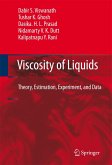Upon an exponential growth of life on earth, supported by a century of oil based energy economy, following a century of its coal-based phase, the world we live in is facing a point of inflection! at the threshold of an expo nential decay. It is, in fact, the quest for counteracting its dreaded conse quences that are bound to follow, which half a century ago provided the stimulus for launching the space program. Coal and oil are made out of carbon and hydrogen atoms. Hydrocarbon molecules consisting of these atoms are the essential ingredients of life by providing energy in a remarkably compact from. This property is due to the fact that hydrocarbons, by themselves, are not highly energetic materi als. The energy is derived from them by chemical reaction with oxygen supplied by the surrounding air. This reaction provides heat and is referred to for that reason as exothermic. The mass of oxidizer it requires is, in fact, ~ 3. 5 (if it is provided by oxygen alone) or ~ 15 (if it is supplied by air) times larger than that of the hydrocarbon. For vehicular transport, where the fuel has to be carried on board, this feature is of particular significance.
Hinweis: Dieser Artikel kann nur an eine deutsche Lieferadresse ausgeliefert werden.
Hinweis: Dieser Artikel kann nur an eine deutsche Lieferadresse ausgeliefert werden.








